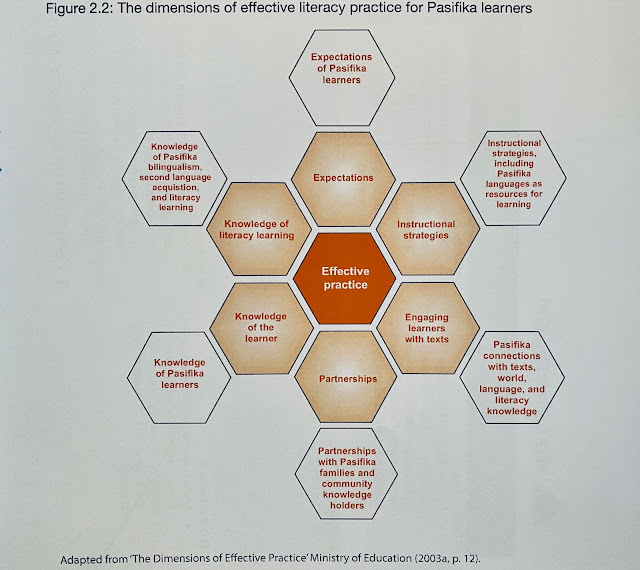PELP workshop 2.
After another delay due to Covid-19 Friday was our second opportunity to meet with other teachers undertaking the PELP project and hear from leading academics in the field of early literacy.
The whakatauki of the day was :
"Oua lau e kafo kae lau e lava" " Stay positive and count your Blessings"
The big ideas of workshop 2.
The Va'atele Framework. Dimensions of effective literacy practise for Pasifika learners.
This framework specifically identifies dimensions for effective practise including the requirements for teachers to understand language acquisition, and how bilingualism in all its varieties will effect how we as teachers design and implement our literacy programme.
The language and cultural resources of our learners must be harnessed and used as the springboard for their future learning. Dr Stephen May (2019) cites that if New Zealand is to overcome the home-language achievement gaps we must move from subtractive to additive bilingual educational approachers. Learning should be a double hulled waka... each language supported by the other to propel the learner forward.
Professor Janet Gaffney and Dr Meg Jacobs outlined their research into Pasifika ECE learning ways of interacting with children in Mana-enhancing ways. The collective nature of Mana is such that the benefits which arise in the education of a single pasifika child are shared with the whole aiga and community. The mana carried by the child's heart language is inseparable from the world view of their aiga and communities. They contend that by engaging in a teaching pedagogy which is culturally sustaining we open a window into the child's thinking which supports literacy work.
Literacy must be about making meaning and sharing understandings. By embedding my literacy and classroom programme in ways which are respectful to and visibly include Pasifika knowledges it will act as a support for my learners. This blog post shares a clip of one of my learners making connections between the text and her rich experiences of baking with her Nanny. Classroom blog
The PELP texts provide a two-fold opportunity for this, not only do they include the story in a home language for fanau to read and discuss, they also are culturally situated with a Pasifika worldview. They are stories to which my learners can relate and share. These texts are designed to allow our students to make connections with their own lived experience. Standardised reading testing of my learners places emphasis on the comprehension and inference skills of the reader. This project has challenged me to reflect on the equity of the importance placed on these assessments of reading when the text is often unrelated to my learners realms of experience or world view. I find myself questioning, do the texts used to level our readers allow them to reference on their own knowledges and vocabularies when answering?



Comments
Post a Comment